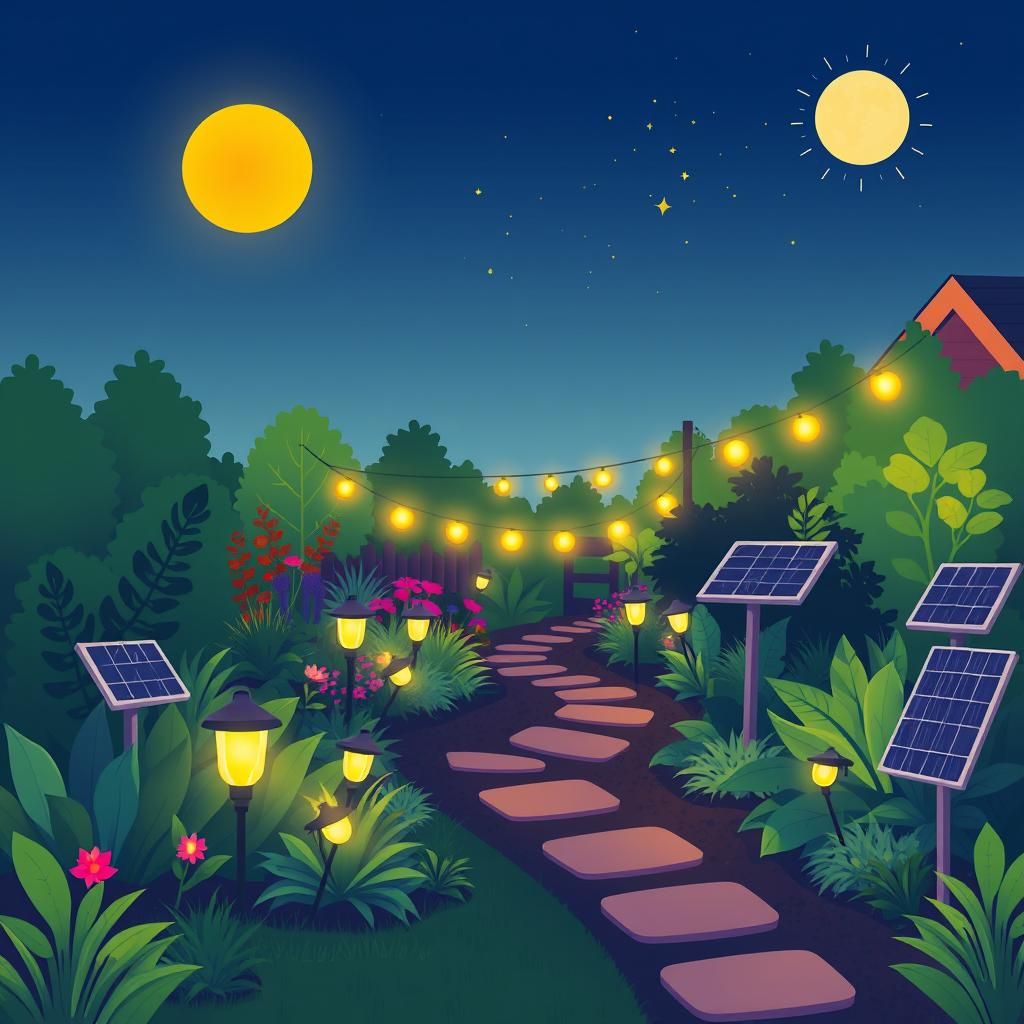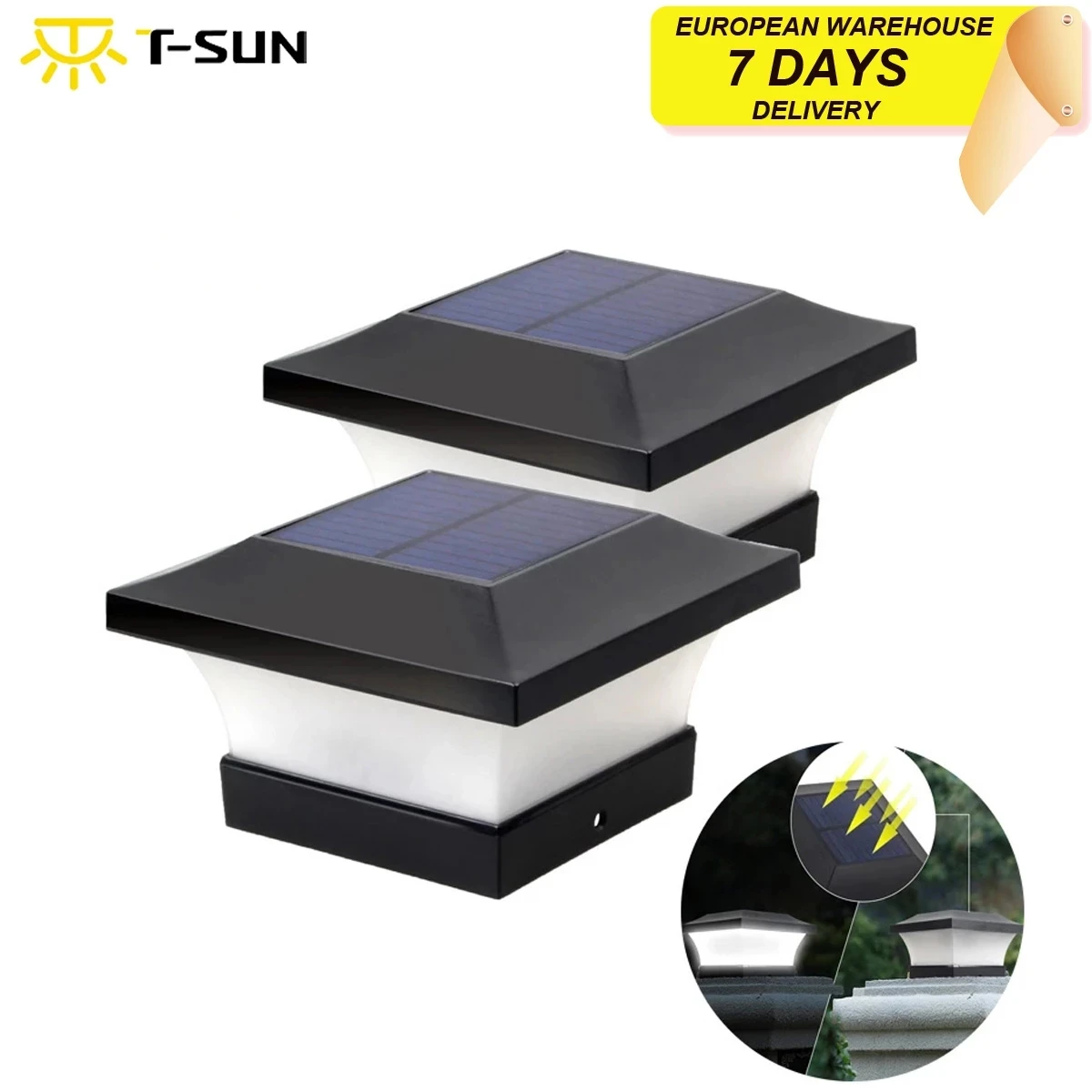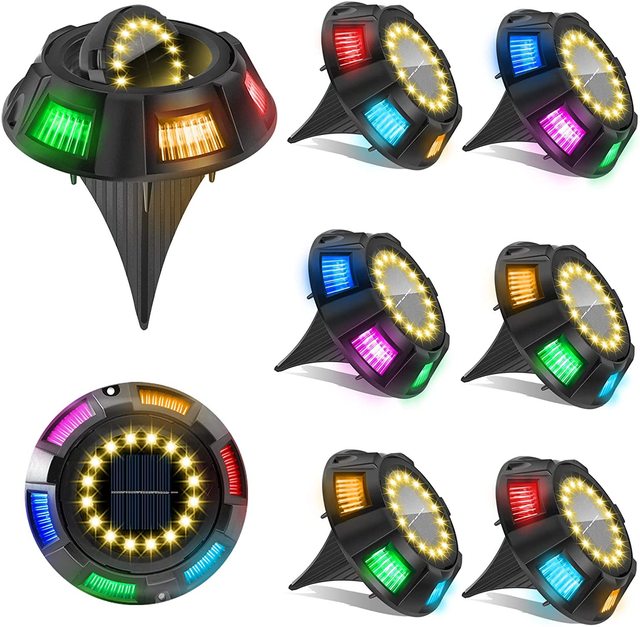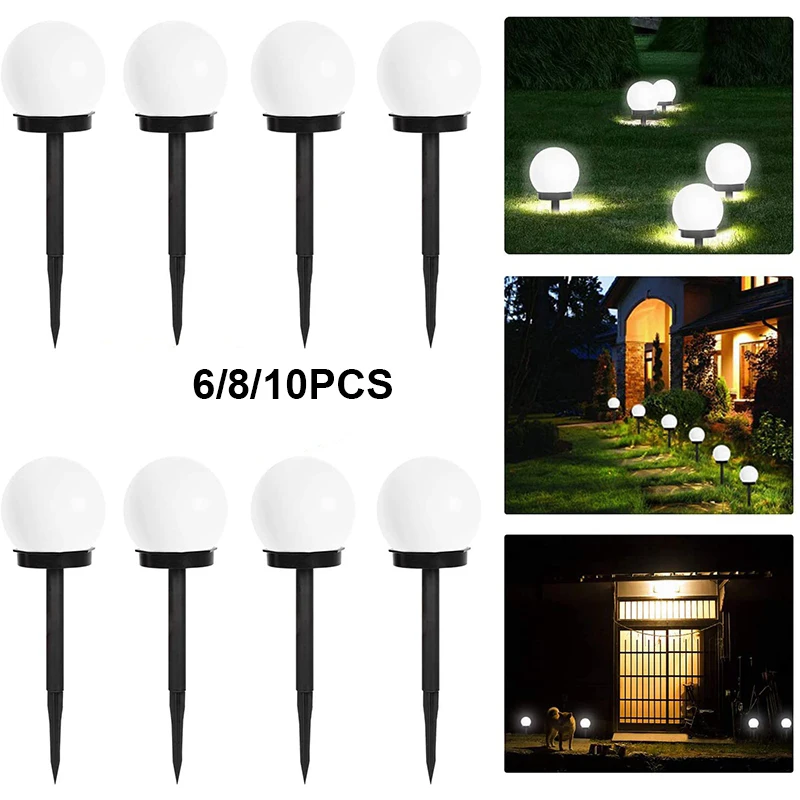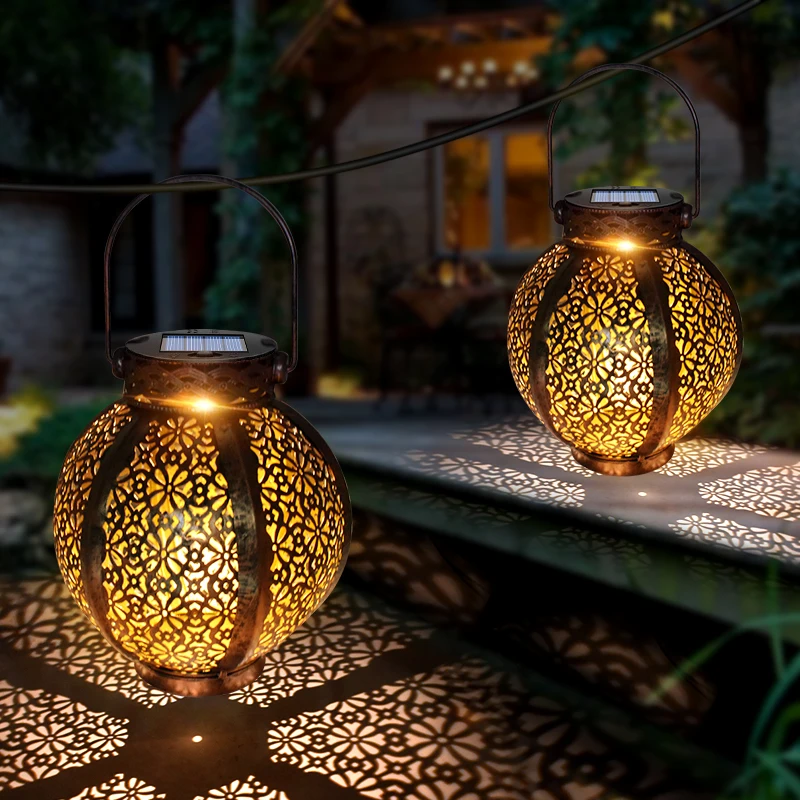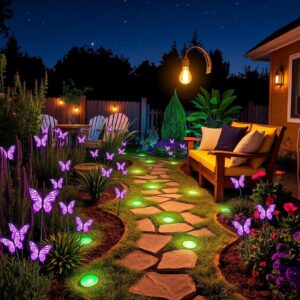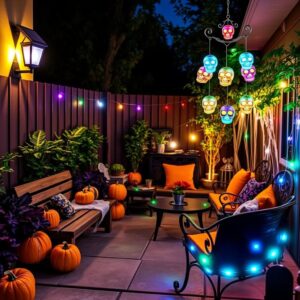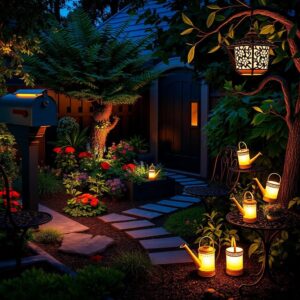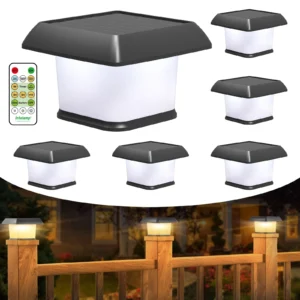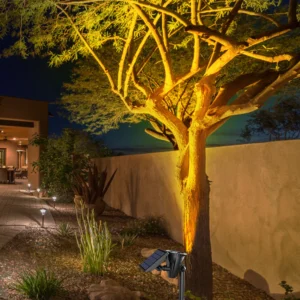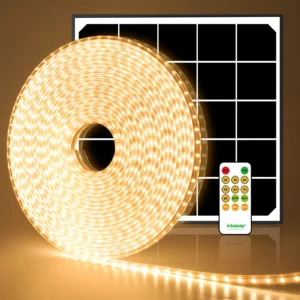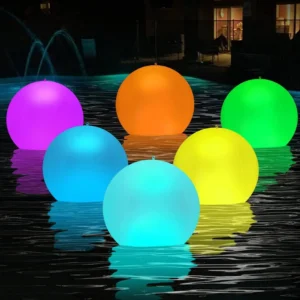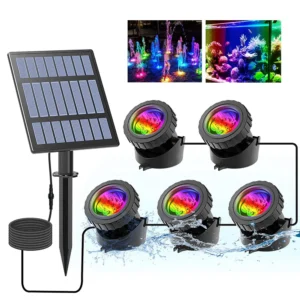6 Solar Mushroom Lights – Colorful LED Outdoor Garden Decor
Introduction to Solar Lighting
Imagine stepping outside just as twilight settles in, and your garden quietly lights up—no switches, no cords, just a warm, effortless glow that feels like something out of a peaceful dream. That’s the understated power of solar lighting: functional where you need it, beautiful where you want it, and sustainable without you having to think twice. So, what are solar lights, and why do they keep popping up in driveways, pathways, parks, and patios everywhere?
What Are Solar Lights?
At their core, solar lights are simple devices. They soak up sunlight during the day and use it to cast a gentle radiance at night. No wires, no digging for cables, no running up your electric bill. You’ll usually spot solar lights edging garden beds, guiding you along walkways, or lining up along fences as tiny sentinels against the dark. In cities, they even power street lamps for neighborhoods, trails, and parks. They’re as practical as they are pleasing, shining bright where you need a little extra light—whether that’s lighting up your driveway, adding a hint of enchantment to your backyard, or simply helping you find your keys by the front door.
Why Choose Solar Lighting?
So why pick solar lighting over the tried-and-true plug-in or battery options? For one, solar lights run on what the sun gives freely—renewable, clean energy that doesn’t cost you a dime once the lights are in place. There are no monthly bills piling up, no fossil fuels involved, and no complicated installations to fuss over. You just find a sunny spot, stick them in the ground, and let nature do its thing.
They’re super easy to install. No wiring means no electrician—and a lot less hassle if you want to move them around later. You can design your dream garden lightscape with very little trouble. Plus, you’re doing your bit for the planet; each warm pool of light is powered by the same sun that helps your plants grow. It’s energy independence in a garden-friendly package.
All in all, solar lights are a straightforward upgrade: eco-friendly, kind to your wallet, and so easy to live with you’ll wonder why you didn’t invite that quiet little glow into your life sooner. If you want more details on how they work or the practical benefits, check out guides like the ConsumerAffairs overview—but consider this your invitation to let the sun light your way, one solar lamp at a time.
Solar Mailbox Light – Elegant Solar Fixture with Automatic Control
The Science Behind Solar Lights: How Do Solar Lights Work?
Step outside at dusk and look at a garden pathway lined with gentle pools of light. Ever wonder what goes on inside those sturdy little lanterns to flick on as the sun disappears? Let’s break down the science—spartan style—so you know exactly what’s happening each night when your solar lights turn your space into something a little magical.
Basic Components of a Solar Light
Solar lights are deceptively simple, made up of four key parts that work together like clockwork:
- Solar panel: The flat surface, often perched on top, that captures sunlight during the day.
- Battery storage: A rechargeable battery tucked inside the casing, storing up the sun’s power.
- LED lights: Efficient bulbs that sip energy and throw off a clear, direct beam after dark.
- Sensors and switches: Automatic sensors that read the daylight, flipping the switch as soon as the sun dips.
Every light, from petite stake lamps to chunky post top lanterns, sports these basic building blocks. Nothing fancy, but when arranged right, magic happens at sundown.
Step-by-Step: Solar Light Operation
Here’s how the daily cycle rolls:
Daytime:
As soon as the first shaft of sunlight hits the solar panel, the magic starts. The panel converts solar energy into electricity, which runs straight into the rechargeable battery. That little battery soaks up the sun all day long, holding onto it like a squirrel hoards acorns for the night ahead.
Nighttime:
When dusk settles, the built-in sensor gets to work. It senses the light fading. Once darkness hits a certain level, the circuit connects and—click—the stored power in the battery zips to the LED bulbs. The result? Warm, reliable light, powered by nothing but yesterday’s sun, until dawn.
Some solar lights have extra touches, like motion detectors (to save energy for surprise guests) or timers, but at heart, it’s a sunset-to-sunrise cycle as sure as night follows day.
Energy Conversion Explained Simply
At center stage is the solar panel—more than just a shiny cap, it’s a tiny electricity factory. Inside, solar cells use the photovoltaic effect: they take in photons from sunlight and set electrons loose, producing usable electricity. Think of it like sunlight bumping into the panel and knocking loose the power to run your evening lights.
Why LEDs? Because they do the job with less juice and last a long time. LEDs (light-emitting diodes) convert electric current into light without wasting much energy as heat—unlike old-school bulbs. That’s why your solar lantern can glow for hours on a battery charge taken from just a few sunny hours.
In the end, it’s a tight loop—solar panel to battery, battery to LED—where every piece has a simple, important job. And because the system is self-contained, you don’t wrestle with cords or monthly bills. One clean cycle, every day, from sun-up to sun-down, and your garden stays lit with almost no effort at all.
Solar Ground Light LED Rotating Spotlights for Outdoor Use
Deep Dive: Understanding Solar Panels, Batteries, and LEDs
So, what really happens behind the glow of your favorite solar garden light? Let’s cut out the fluff and get down to basics: it’s all about three main players—solar panels, batteries, and LEDs. Here’s how each one pulls its weight.
How Solar Panels Work
Think of solar panels as the silent workhorses. These are usually small rectangles sitting atop your solar lights, built from photovoltaic cells—typically made of silicon. When sunlight hits these cells, it kicks electrons into motion, turning solar energy directly into electric current. This isn’t magic, just science—the “photovoltaic effect.”
Most solar garden lights use monocrystalline or polycrystalline panels. Monocrystalline panels are a bit more efficient (they grab a touch more sunlight), but polycrystalline does the job well enough for most backyard setups. Whichever you use, temperature matters. Solar panels actually thrive in cooler temps—heat can sap their efficiency. So yes, they’ll power up just fine even on brisk winter days, as long as there’s light. You don’t have to live in the tropics for your lights to work.
Battery Storage in Solar Lights
All that daytime solar hustle would be wasted without a place to keep the juice. That’s where batteries step in. Most solar lights use either rechargeable nickel-metal hydride (NiMH) or lithium-ion batteries. Both are compact and dependable, but lithium-ion has the edge for longer lifespan and consistent performance.
Here’s the rundown: during the day, your solar panel charges up the battery. At night, the stored energy gets released to power the LEDs. Simple. Batteries won’t last forever, though—expect most to chug along for 1–3 years before they need swapping out. If your solar lights start dimming early in the evening, odds are it’s time for a new battery. No tech degree required.
Role of LED Lights
Now for the star of the show: LEDs. LEDs (light emitting diodes) are ultra-efficient—meaning they get bright without wasting energy on heat. That efficiency is why your little light can run all night on a day’s worth of sun.
LEDs also give you options. Want a crisp white glow lining your path? Prefer a cozy golden hue for your patio? LEDs come in a range of colors and tones. They last ages—10,000 hours or more—so you can forget fiddling with replacements every season.
Combine a tough solar panel, a reliable rechargeable battery, and efficient LEDs, and you’ve got the makings of hassle-free garden magic. This trio is the secret sauce behind every solar light flickering on at dusk, whether it’s a single post in your yard or a whole parade of lanterns guiding your way.
96 LED Solar Willow Vine Light for Outdoor Decor
Solar Garden Lights: Practical Uses and Tips
Picture your garden just after sunset—soft lights flicker to life, guides along winding paths, and turn your backyard into a relaxed sanctuary. That’s the magic of solar garden lights: practical, simple to set up, and just a little bit enchanting.
Where and How to Install Solar Lights
Solar lights are as easygoing as they come, but how you place them makes all the difference. The job is simple: your lights need sunlight to charge up during the day. So, scope out the sunniest spots—along the edge of flower beds, beside walkways, or near patios. Avoid hiding your lights under thick shrubs or in the shadow of big trees; even a little shade during midday can cut down on how brightly your lights shine at night.
Trim back plants that might block the sun from solar panels. Place stake lights every two to three feet along pathways for a continuous glow. For border lights, aim them toward the area you want to highlight. Got a seating area or garden bench? Try clustering a few lanterns or spotlights nearby—it makes the space feel cozy and just a touch magical.
No wires, no digging trenches, no calling an electrician. Just sink the stakes into the soil, angle the panels up toward the southern sky, and you’re set.
Garden Design Ideas
Solar lights don’t just make things brighter—they set a mood. Line your walkway with classic stake lights for an easy, welcoming trail. Drape solar string or fairy lights through trellises, fences, or tree branches for a dash of whimsy. Want to highlight a favorite rose bush or statuary? Tuck a spotlight nearby to make it pop, even after dark.
Use step or deck lights for safety, lighting stairs and edges where someone might trip. Mix and match different light styles—lanterns, globes, filigree stakes—to create layers and depth. Solar lights also let you get creative for outdoor gatherings: hang lanterns above a table, or float colorful orbs in a pond. The result feels effortless, never overdone.
Troubleshooting Common Issues
Not every solar night is perfect—sometimes, lights refuse to glow. Don’t worry. If your solar lights seem dim or are skipping nightly duty, start simple. Wipe the solar panel with a damp cloth; dust and pollen can keep it from charging. Make sure the light gets at least six hours of direct sun, and check that nearby branches aren’t throwing shade late in the day.
If you’re still in the dark, open the light’s housing and check the battery. Rechargeable batteries wear out—most last one to two years—so swapping in a new battery can bring a tired light back to life. Also, check for obvious wear or corrosion, especially on switches or battery terminals.
Sometimes, the solution is as simple as turning the light’s on/off switch back on—a step easily forgotten in the excitement of garden upgrades. With a little attention and the right placement, your solar garden lights will keep casting golden glows night after night, no hassle and no wires needed.
Solar Ball Stake Light – Outdoor LED Garden Lighting
Kids’ Guide: How Do Solar Lights Work? (Kid-Friendly Overview)
Explaining Solar Power to Kids
Imagine the sun as a giant battery in the sky that helps light up your garden at night—pretty cool, right? Here’s how it works: during the day, solar panels (they look like shiny rectangles on top of solar lights) soak up sunlight, almost like how you soak up sunshine at recess. These panels turn sunlight into a special kind of electricity called solar power. Think of the panel like a superhero that takes in energy from the sun and stores it, saving it for later when you need it.
But that’s not all—inside every solar light, there’s a tiny battery. The battery grabs the solar energy and holds onto it all day, like a squirrel saving nuts for nighttime. When it gets dark, a sensor hidden in the light realizes the sun has gone to sleep. That’s its cue: the battery wakes up and feeds power to the tiny LED bulbs inside the lamp, making them glow and shine in your yard, on your steps, or along the path. Ta-da! The sun helps you light up the night.
Fun Activities and Projects
Want to see how solar power works for yourself? Grab a grown-up and try making a mini solar light together. You can find DIY kits online or even make one with a simple solar panel, a small rechargeable battery, some wires, and a little LED light. Head outside on a sunny day, connect the parts, and watch what happens as the sun hits the panel. The LED will light up, showing you how the sun’s rays become electricity right before your eyes!
Or, try a cool science experiment: take two small solar lights—put one outside in a sunny spot and the other in deep shade. Which one glows brighter at night? You’ll discover just how much solar lights love soaking up the sun.
Everyday Examples Kids Can See
Look around your neighborhood at night. See those glowing lights along driveways, garden paths, or even in some bird baths? Chances are, they’re solar lights. Next time you’re outside, point out these little lanterns to your friends or family. Ask if you can help “charge” them by making sure branches and leaves aren’t covering the solar panels. Even your school might have solar lights by the playground or on the flagpole!
So, whether you’re building a tiny solar lamp or just spotting them around the block, you’re seeing solar power in action—proof that a little sunshine can keep the night bright. Ready to turn your yard or project into a sun-powered wonder? Give solar lights a try and let the stars—and your lights—sparkle!
Solar Light Metal Carving Hollow Table Lamp for Outdoor Decor
Tips for Maximizing Solar Light Performance
So, you’ve filled your garden with eco-friendly solar lights—now, how do you keep them glowing their brightest all year long? Solar lights are tough, but a little practical care can turn your twinkling pathways and sun-powered fairy lights into reliable night-time companions. Here’s a spartan, straightforward list of solar light installation tips that’ll keep your backyard radiance hassle-free.
Cleaning and Maintenance
Think of your solar lights’ panels like windows: if they’re dirty, less sunlight gets through. Every couple of weeks, give your panels a quick wipe-down with a soft, damp cloth to clear away dust, pollen, or any stubborn bits that storms might leave behind. Dirt blocks sunlight, which means less energy harvested for those cozy night glows.
Check for corrosion on battery contacts and connections—a quick glance is enough. Unscrew the housing, look for any white or green buildup, and if there’s any, gently scrub it away with an old toothbrush. Be sure to use gloves, since corrosion can irritate your skin. While you’re there, pop open the battery compartment and see if the batteries need swapping. Most solar lights use rechargeable AA or AAA batteries, and they’ll last about 1–2 years before fading. If the switch feels sticky or unresponsive, a shot of contact cleaner does wonders.
Placement Best Practices
Location is everything. For maximum brightness, position your solar lights where they’ll soak up the most sun—usually facing south in the Northern Hemisphere. Avoid spots shaded by trees, gutters, or fences, since even a little blockage reduces the charge. Walk your garden at intervals throughout the day and notice where the sun actually hits.
Space pathway lights about 3 feet apart to create a steady, inviting trail—close enough for overlapping pools of light, but with minimal shadow gaps. If you’ve got string or fairy lights, drape them high enough for sunlight to reach their tiny solar panel heads.
Keep plants trimmed back; once those shrubs fill out, they sneakily shade your lights. A simple seasonal pruning session can bring struggling solar lights back to life.
Seasonal Considerations
Here’s the honest truth: winter and cloudy days mean your solar lights won’t charge as much, but they don’t have to go dark. Brush off snow or fallen leaves from the panels, angle them steeply toward the low winter sun, and move portable lights to brighter spots if needed. Many solar lights will still glow—just for fewer hours.
On gloomy days, be patient. Panels will charge, just slower. You can maximize performance by making sure lights are extra clean and tweaking placement as needed. If your garden sees very little direct sunlight all winter, consider bringing the lights indoors for storage (and to prolong battery life), then placing them back out when the days lighten up.
With these solar light installation tips, you’re set to keep your outdoor space radiant, practical, and sustainably bright—no matter the season.
4/6/10 PCs Set | Color Changing Solar Garden Stake Lights for Pathway Fence and Patio
Busting Common Myths & FAQs About Solar Lights
Top Myths About Solar Lighting Debunked
Let’s clear the air: solar garden lights aren’t just a summertime novelty that flicker out at the first sign of a gray sky. In fact, some of the most common ideas about solar lighting just don’t hold up. Here’s what’s actually true:
Myth: “Solar lights don’t work in winter.”
Plenty of people assume snow and chilly temps mean your solar path lights will hibernate till spring. Not so. Solar panels work just fine in cold weather—they might even run more efficiently than during a blazing hot day. What slows things down is shorter daylight hours and heavy snow covering panels. Brush off the snow, give your lights a clear shot at the sky, and you’ll catch more rays, even when it’s freezing.
Myth: “Solar lights aren’t bright or reliable.”
Old-school solar lights did give off a weak glow, but today’s versions are all about efficiency. LEDs sip battery power and pack surprising punch, so you get a warm beam (or crisp white, if you prefer) that keeps things cozy and practical, night after night.
Myth: “Solar panels require constant sun to function.”
Guess what? Solar panels don’t need perfect, cloudless days. They store up whatever daylight they can collect—sunny or partly cloudy—and stash that energy in their batteries. Sure, more sun means longer glow, but your lights won’t quit just because you hit a run of overcast afternoons.
Frequently Asked Questions
Do solar lights need direct sunlight?
Direct sunlight gives the best “charge,” but solar panels happily soak up any daylight they can find. That said, shady corners under big trees or the north side of the house will slow things down. For optimal performance, position your lights so they get several hours of sun—think south-facing spots with clear skies overhead.
How long do solar lights last?
With a bit of easy upkeep, expect several years of reliable glow. Most batteries last 1–2 years before needing replacement, while LEDs can shine for far longer—often over a decade. If your solar lights start to fade, swapping out the battery often brings them right back to life.
Can you use solar lights indoors?
In a word: not really. Solar panels charge best from outdoor daylight. Indoors, even by a window, the power trickle isn’t enough for reliable lighting. If you love the look, you can let your lights charge outdoors, then bring them inside—but they won’t work as a regular, always-available lamp.
Additional Resources for Deeper Learning
Want to dig deeper?
- ConsumerAffairs Guide: How Do Solar Lights Work? — Step-by-step explanations for beginners.
- SEPCO: How Solar Works — A breakdown of the tech behind solar lighting.
- EcoFlow Blog: How Solar Garden Lights Work — Detailed insights for garden enthusiasts.
- Festive Lights Troubleshooting: 8 Things To Do If Your Solar Lights Aren’t Working — Fixes for common issues.
- Forbes Myths: Solar Myths Debunked — More myth-busting facts.
No need to stay in the dark. With the right info (and maybe a bit of sun), your solar lights will keep your evenings glowing—season after season.

